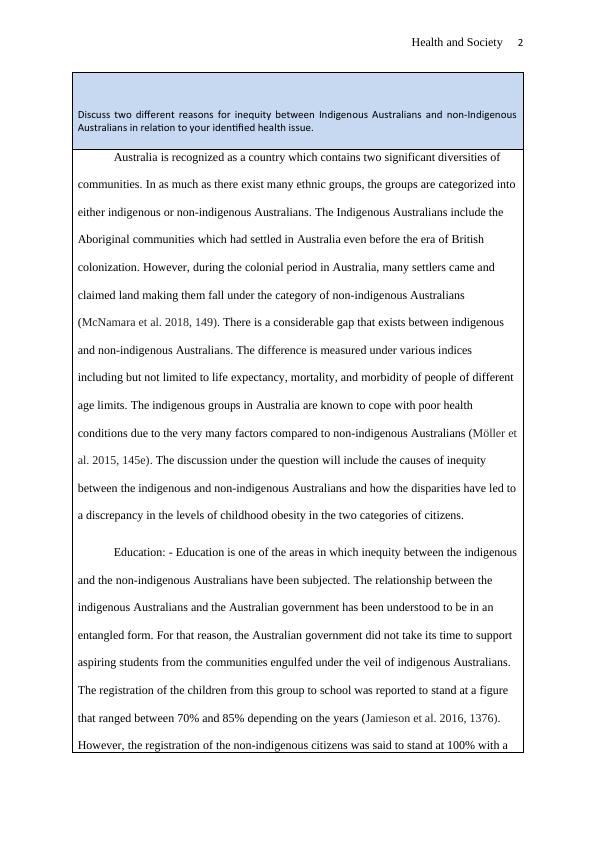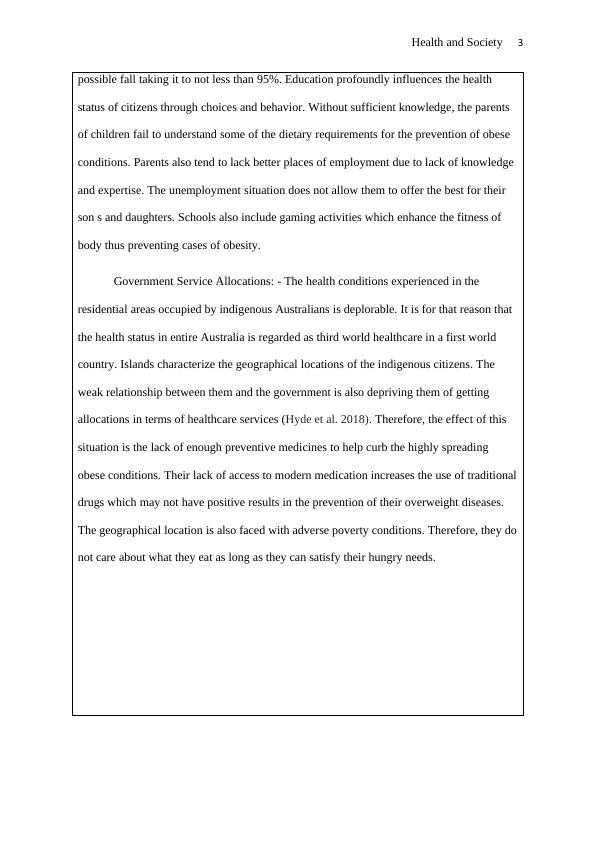Inequity between Indigenous and non-Indigenous Australians in relation to health issue
Added on 2023-01-19
9 Pages2634 Words38 Views
End of preview
Want to access all the pages? Upload your documents or become a member.
Inequity between Indigenous and non-Indigenous Australians in relation to childhood obesity
|8
|2223
|47
Inequity between Indigenous and non-Indigenous Australians in relation to childhood obesity
|8
|2271
|53
Childhood Obesity in Australia: Inequity between Indigenous and Non-Indigenous Australians
|8
|2232
|5
Inequality in Indigenous Health
|8
|2163
|24
Inequity in Childhood Obesity: Indigenous vs Non-Indigenous Australians
|9
|2393
|64
Assignment on Indigenous Australians and Economics
|9
|1687
|120


